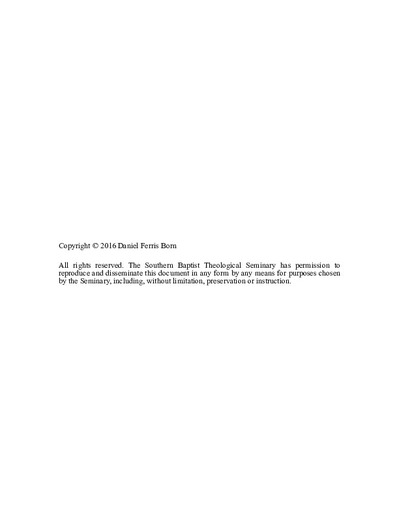| dc.description.abstract | Daniel Ferris Born, Ph.D.
The Southern Baptist Theological Seminary, 2016
Chair: Dr. William F. Cook
The figurative use of "son(s) of" phrases in the NT represents the author employing the father-son relationship, and what this relationship represents in the ancient world, as a tool to illustrate and explain various concepts and ideas in NT thought. As a result, the father-son relationship in the ancient world must be employed in the interpretation of these figurative "son(s) of" phrases. Failing to understand the importance of genealogical identification, kinship, and the social implications of the father-son relationship in the ancient world and bring these concepts to bear in interpretation, will result in a failure to understand what the NT authors seek to communicate by using "son(s) of" phrases.
Chapter 1 provides an introduction to this topic and a history of how linguists and commentators have approached these phrases in the past. There are very few scholars who have sought to employ the father-son relationship in their interpretation of these phrases and their figurative use.
Chapters 2 and 3 survey the use of these phrases inside and outside the NT. Chapter 2 includes the use of בֵּן in the Hebrew Bible, "son(s) of" phrases in the LXX, as well as the use of υἱός plus the genitive in Classical Greek, the OT and NT apocrypha and pseudepigrapha, other early Jewish and Christian writings, coins and inscriptions, and the papyri and ostraca. Chapter 3 surveys the use of υἱός in the NT.
Chapter 4 explores the father-son relationship in the social context of the NT in order to distill the major features of the father-son relationship into an interpretive framework which can be utilized in understanding what the NT authors seek to communicate in their figurative use of "son(s) of" phrases. Chapter 5 employs this framework in the interpretation of the figurative "son(s) of" phrases in the NT. Chapter 6 concludes the work, discusses its implications, and recognizes the need for further study in certain areas. | en_US |

